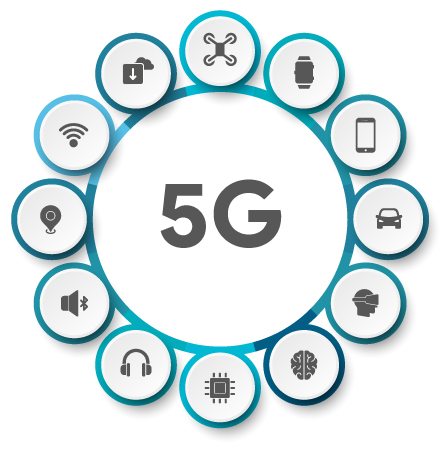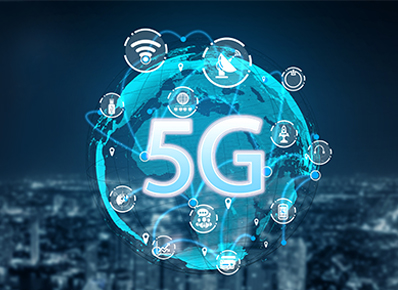In today’s rapidly evolving digital landscape, staying connected is a necessity. The advent of 5G technology represents a significant leap forward in connectivity, promising faster speeds, lower latency, and a host of transformative applications. In this article, we’ll explore what 5G is, how it works, and the profound impact it’s poised to have on our interconnected world.
What is 5G?
5G, short for the fifth generation of wireless technology, is the latest iteration in a series of mobile network standards. It succeeds 4G (LTE) and offers several key improvements over its predecessor. At its core, 5G is designed to deliver faster data transfer rates, lower latency (the time it takes for data to travel from source to destination), and greater network capacity. These enhancements are made possible through a combination of new technologies and infrastructure upgrades.

How Does 5G Work?
To understand how 5G works, it’s essential to grasp a few key concepts:
1. Millimeter Waves:
5G utilizes higher frequency radio waves, including millimeter waves, which operate at frequencies above 24 GHz. These high-frequency waves enable faster data transmission but have shorter range compared to lower frequency bands. To overcome this limitation, 5G networks use a dense network of small cells to provide coverage in urban areas.
2. Massive MIMO (Multiple Input, Multiple Output):
Massive MIMO technology involves using a large number of antennas at base stations and devices. This allows for more efficient communication by increasing the capacity and reliability of data transfer.
3. Network Slicing:
5G introduces the concept of network slicing, which enables the creation of multiple virtual networks on a shared physical infrastructure. This customization allows network operators to tailor connectivity to meet specific requirements, such as low latency for autonomous vehicles or high bandwidth for video streaming.
Impact on Connectivity
The deployment of 5G technology has far-reaching implications for connectivity across various sectors:
1. Faster Internet Speeds:
5G promises to deliver internet speeds up to 100 times faster than 4G. This means smoother video streaming, quicker downloads, and enhanced real-time online experiences.
2. Lower Latency:
Reduced latency in 5G networks opens the door to applications that demand near-instantaneous communication, such as remote surgery, augmented reality (AR), and virtual reality (VR) experiences.
3. IoT and Smart Cities:
5G’s ability to handle a vast number of devices simultaneously makes it ideal for powering the Internet of Things (IoT). It will play a pivotal role in building smarter cities, optimizing energy usage, and improving traffic management.
4. Autonomous Vehicles:
The low latency and high reliability of 5G are crucial for autonomous vehicles. It enables real-time communication between vehicles and traffic infrastructure, enhancing safety and enabling more efficient transportation systems.
5. Healthcare:
Telemedicine and remote patient monitoring will become more accessible and reliable with 5G. Healthcare providers can deliver timely care and gather patient data with minimal delay.
6. Entertainment and Gaming:
Gamers and entertainment enthusiasts will benefit from lag-free gaming experiences and seamless 4K video streaming on mobile devices.
Conclusion
5G technology is poised to revolutionize the way we connect and interact with the world around us. Its faster speeds, lower latency, and network customization capabilities will pave the way for innovations that were once only dreamed of. As 5G networks continue to roll out globally, we can anticipate transformative changes in various industries, from healthcare and transportation to entertainment and beyond. The future of connectivity has arrived, and it’s faster and more versatile than ever before.

